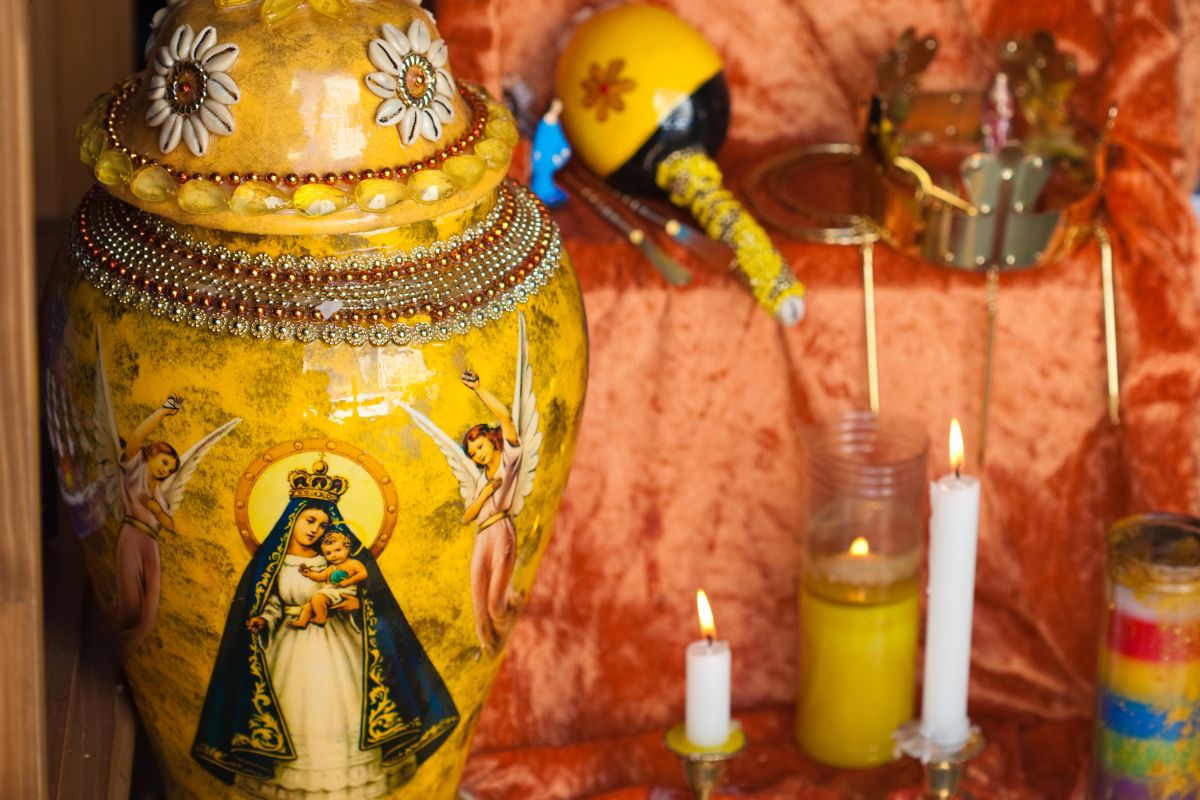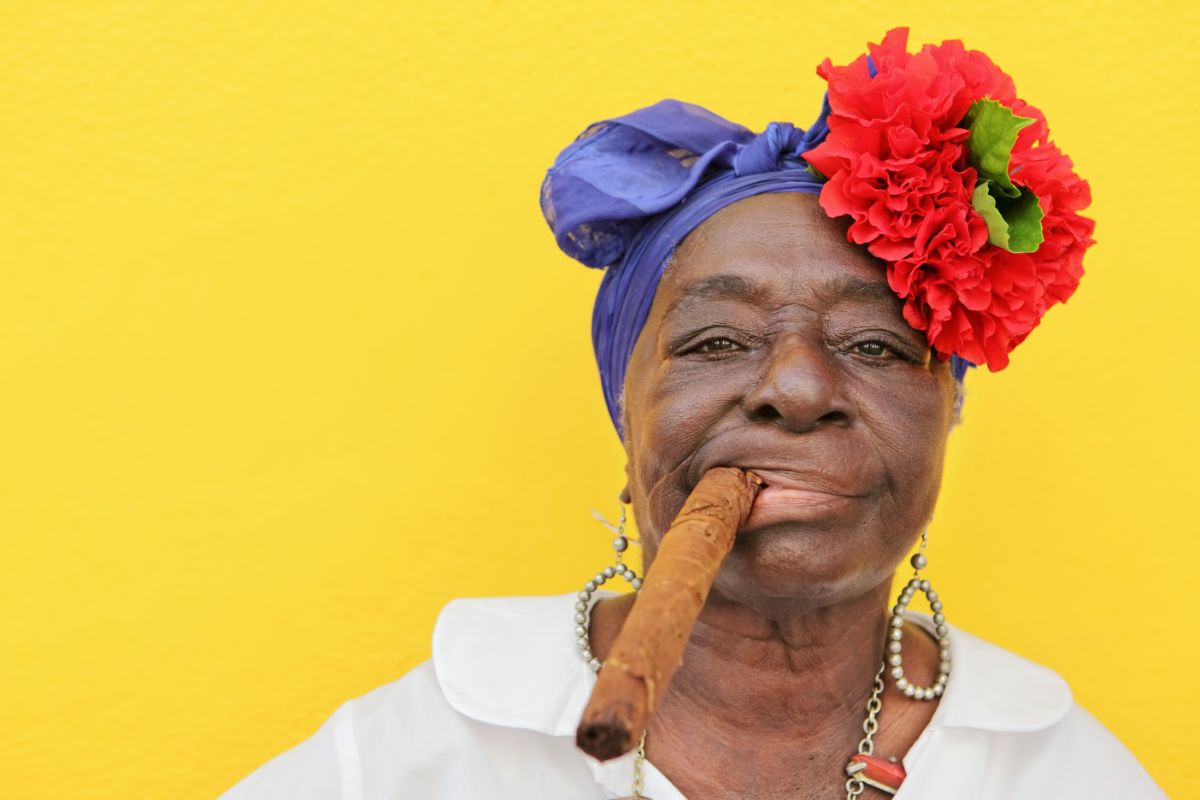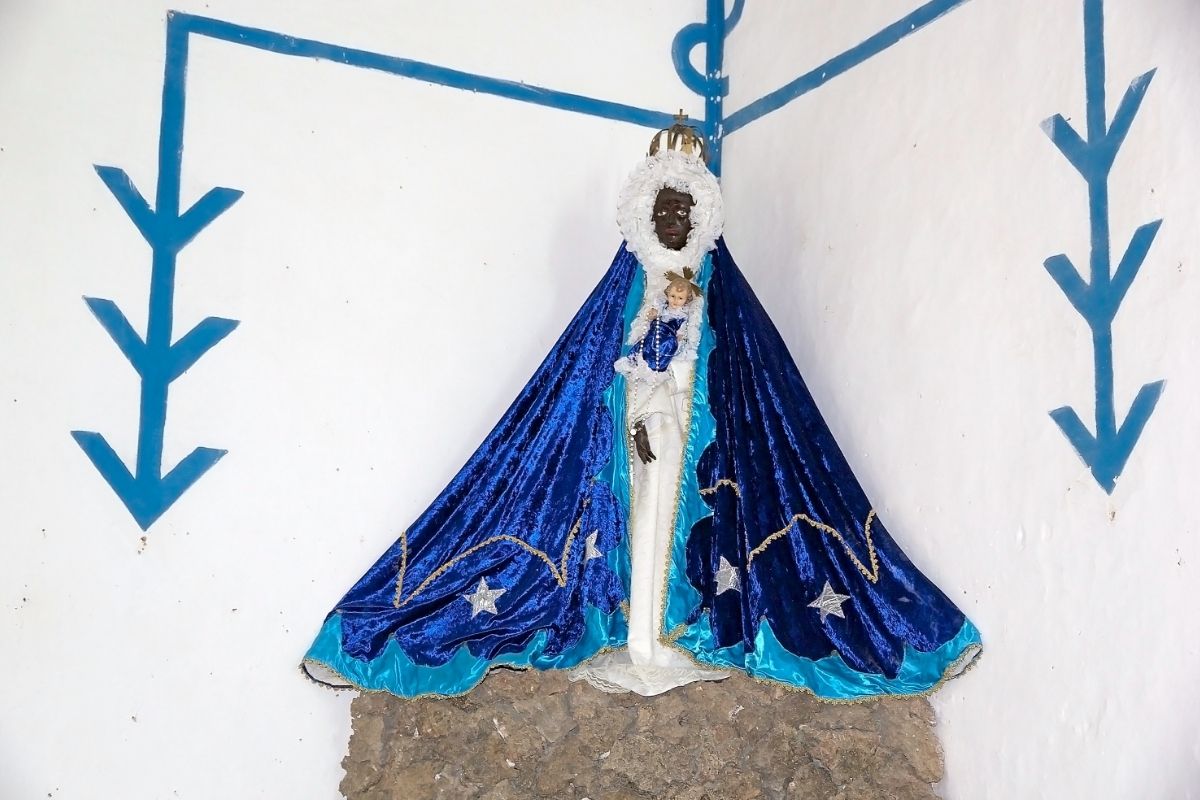Regla de Ocha is an interesting Afro-Cuban religion that developed in Cuba in the late 1800s. Regla de Ocha means “the rule of ocha” where “ocha” (and “oricha”) is a term for the religion’s deities.
It is also known by other names, mainly Santeria, but also Regla Lucumí, or Lucumí.

Regla de Ocha is a polytheistic religion, which means those who follow the religion believe in multiple deities or gods.
It came about as 3 different religions blended together, specifically Spiritism, the traditional Yoruba religion of West Africa, and the Roman Catholic Church.
In this article, we’re going to tell you everything you need to know about Regla de Ocha, including their main beliefs and practices.
Please feel free to scroll ahead to any section that jumps out at you. Here goes…
Side note – for the purposes of this article, the terms Regla De Ocha and Santeria will be used interchangeably.
Understanding The Basics Of Regla De Ocha
Prevalence And Demographics
Santeria may seem like an outdated religion to some, but scholars have estimated that around 8% of the Cuban population were initiates of the religion in the early 21st century, which equates to about 800,000 and 900,000 people.
The majority of the religion’s practitioners are found in the Matanzas and La Habana provinces of Cuba.
It is most common among the working class Afro-Cuban communities, but it has been known to be taken up by members of other ethnicities and socio-economic groups.
Beliefs
The way that the 3 derivative religions combine to form Santeria is very interesting.
The multiple deities derive their names and their qualities from those of the traditional Yoruba religion, but they are also equated with the saints of the Roman Catholic Church.
It is believed by followers of Santeria that every person on earth is linked to a particular deity or oricha, and this determines that individual’s personality.
They also believe in a creator deity, known as Olodumare, to whom all the other deities are subservient.
The deities of Santeria can be venerated either at home, or in the temple, known as a casa. Each casa is run by either a priest, known as a santero, or a priestess, known as a santera.
To become a member of a particular casa requires an initiation ceremony, which we will get onto later.
Where Spiritism comes into things is that the religion involves divination rituals to decipher messages from the deities, or oricha.
What’s more, those practitioners who provide offerings to the spirits of the dead often identify as spiritual mediums.
Practices of the religion often include the use of talismans, and the preparation of herbal remedies for healing rituals.
History
The Santeria religion developed gradually in Afro-Cuban communities following the Atalantic slave trade that took place in both the 16th and 19th centuries.
The majority of enslaved West Africans brought to Cuba were of the Yoruba and Roman Catholic religions.
And by the late 19th century, these two religions combined with the Spiritist ideas of the time to form Santeria.
By the 1960s, the religion expanded beyond Cuba’s borders following the Cuban Revolution.
Beliefs
As mentioned earlier, the Santeria religion is polytheistic and revolves around multiple deities, known as oricha.
They can be male or female, and they are not seen as wholly benevolent but rather considered capable of both helping and harming humans, with a mix of attributes that features both virtues and vices.
Each oricha is associated with specific colors, numbers, rhythms, animals, songs and foods.
A primary focus of Santeria is the cultivation of reciprocal relationships with the oricha. It is believed that every follower is born to a particular oricha, who influences the individual’s personality traits.
Practitioners are encouraged to make offerings to the oricha, and many practitioners believe that messages from the deities can be read in everyday goings-on.
The religion also has standards of behavior that practitioners are expected to adhere to, regarding how the practitioner should interact with others, and how they interact with the supernatural.
Traditionally, practitioners take a conservative stance with the main issues in society. For example, they believe in traditional family structure, including marriage, fidelity and child-rearing.

Practices
Initiation Ceremony
As mentioned earlier, for a follower of Santeria to become a fully fledged member of a temple (casa) they must undergo an initiation ceremony. This is known as kariocha.
The process for the ritual is very lengthy, and takes place over the course of 7 days. And there are also two days of preparatory rituals.
The ritual can vary between individuals, and the details of what will happen are often deliberately withheld from those who are yet to be initiated.
The initiate is known as an iyabo or iyawo, which means “bride of the oricha” or “slave of the oricha”.
There will be a priest or priestess present (the santero or santera) as well as a witness, known as oybona or oyugbona, to act like a godparent to the initiate.
The two-day preparation involves a spiritual mass. An opening sacrifice is made and offerings are made to the Ochun, before the oyubona takes the iyabo to a river to purify themselves.
Then to begin the 7-day ritual, the initiate simply sleeps on a mat on the floor in the temple, with no-one allowed to enter the room.
The initiate will have some otanes, which are stones regarded as both the symbolic and literal representation of the oricha. There will also be necklaces representing different deities.
There’s a pinning ritual where a heavy necklace is placed around the initiate’s neck before their head is bathed to rid them of malevolent spirits.
On the 3rd day, a diviner will reveal to the iyabo their Lucumi ritual name.
Otanes of several oricha are then placed on the iyabo’s head, and an animal sacrifice follows of at least 25 birds and 5 4-legged creatures.
On the 4th day, guests arrive, including family and friends of the iyabo, who pay homage o= to the iyabo, and there is music and feasting.
On the 7th day, the iyabo leaves the temple for the marketplace, where they must steal something small as an offering to Elegua.
For the following year, the iyabo must then observe certain restrictions on their lifestyle, which vary for each individual.
This may include the likes of abstinence or not cutting their hair. The iyabo must also keep a notebook to document their practice of Santeria.
Toque de Santo
The Toque de Santo is Santeria’s main public ritual. It’s a drumming ceremony that lasts several hours and is seen as an offering to the oricha in order to gain their favor.
Related Articles
For a better picture of all the religions that thrive in Cuba, please refer to our article titled “Religious Beliefs In Cuba (Ultimate Guide)” which you can access on this link.
Wrap Up
So, Regla de Ocha contrasts quite considerably with the more mainstream religions of today, with its polytheism and multiple deities.
And surprisingly, it’s still considered a modern religion.
But while some practices, such as the initiation ceremony may seem a little out there, the religion still thrives with hundreds of thousands of followers to this day.
- What Is The Largest Island In Cuba? - September 19, 2022
- Havana – Why Is It Cuba’s Most Exciting City? - September 19, 2022
- Cheapest Time To Visit Cuba (Ultimate Guide) - September 19, 2022








